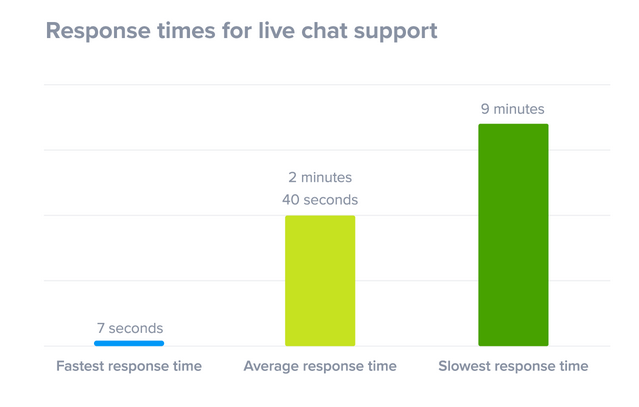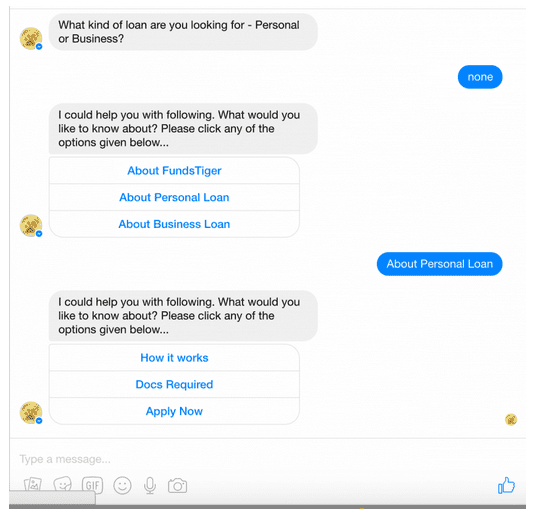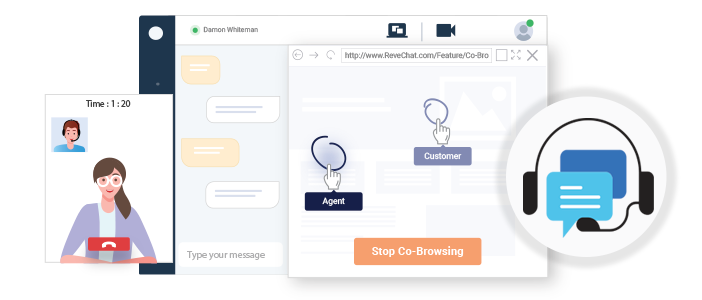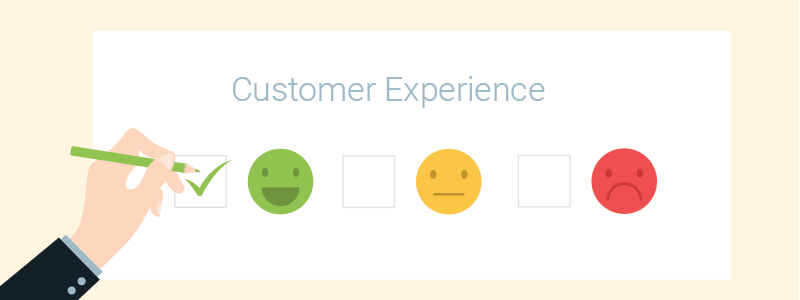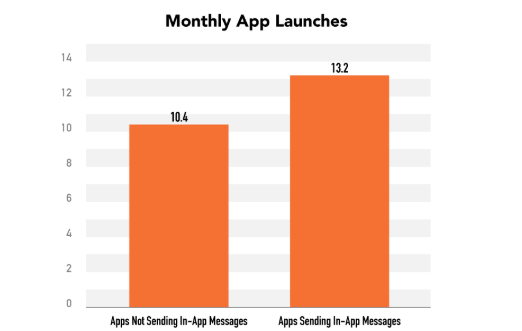How to Create and Use Live Chat for Great Customer Experience
- April 18, 2019
- 21 mins read
- Listen
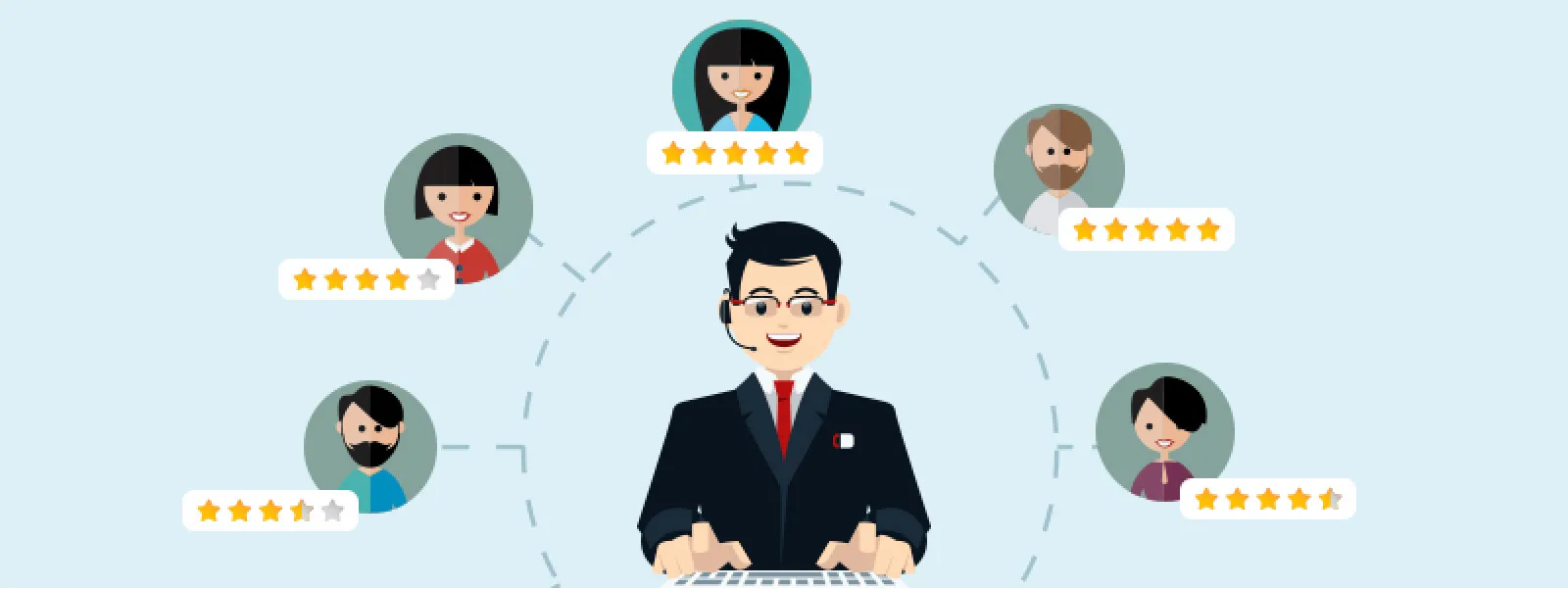
Table of Content
Let’s be real. Running a business is tough enough, and handling customer inquiries shouldn’t add to that stress. How often do you find yourself juggling phone calls, emails, and frustrated customers, wishing there was an easier way?
Well, there is. Live chat is that secret sauce your business has been missing to smooth things out and create better customer experiences. Marketing Insider Group says, 80% of customers would pay more for a product or service to ensure a superior customer experience.
Let me show you how you can create and use Live chat for great customer experiences. Okay, here we go!
How to Create a Great Customer Experience With Live Chat
Maya Angelou said it best, they (customers) may forget what you said but they will never forget how you made them feel. So, from the first interaction that a customer has with your brand and ever since every interaction matters. To create those interactions better with live chat you need to utilize some customer experience strategies. Keep going on to know.
1. Enhance Accessibility and Knowledge
The very first thing you need to do is to enhance the accessibility and gain knowledge about your product. Let’s see how you can do that.
Ensure Your Live Chat is Readily Available
Imagine a customer browsing your website, looking for information on one of your products. They have a quick question, but they don’t want to search through pages or wait for an email reply. If your live chat option is easy to find and accessible on every page, they can instantly reach out for help.
For example, REVE Live Chat makes it easy for the customer to connect with your team. The chat icon in the corner of the screen pops up with a simple message like, “Need help? Chat with us!”
To make live chat more accessible, consider:
- Place it on high-traffic pages like product pages or checkout screens.
- Use proactive chat messages to greet visitors and offer assistance.
- Ensure it’s mobile-friendly so users on any device can easily reach out.
Master Your Product Knowledge
A customer starts a chat asking about a feature of one of your products. If your support team knows the product inside and out, they can confidently answer the question without delay, building trust and satisfaction. On the other hand, if they struggle to provide accurate information, the customer may feel frustrated and doubt your company’s reliability.
For example, if a customer asks, “Does your product integrate with Shopify?” and the agent quickly responds, “Yes, it does! You can follow this link to set it up,” that speeds up the conversation and enhances the customer’s experience.
To improve product knowledge:
- Regularly train your support team on new product updates or changes.
- Create a knowledge base or cheat sheet for quick reference.
- Encourage team members to use the products themselves, so they can share real-world experiences.
2. Great CX is About Personalization
Personalization is certainly an advantage, and even more so a necessity to create an exceptional customer experience. New Epsilon research indicates that 80% of consumers are more likely to make a purchase when brands offer personalized experiences.
Understand the Customer Deeply
The first step in personalization is a deep understanding of your customer. This goes beyond simply collecting data; it is about interpreting it to grasp the unexpressed desires and expectations of the customer.
For example, by analyzing the purchase history in your physical or e-commerce store, it is possible to identify not only the products preferred by customers but also their purchasing patterns and seasonal preferences.
To understand your customers:
- Use Live chat metrics to track customer interactions and preferences.
- Segment your audience based on behavior, demographics, or past interactions.
- Conduct surveys or ask for feedback to get insights directly from customers.
Develop Personalized Communications
Instead of sending generic emails, you can use the information collected to send highly personalized communications: product recommendations based on previous purchases or suggestions to complete a set started by the customer. Communication that makes the customer feel unique and understood can create a strong emotional bond.
To develop personalized communications:
- Use customer data to craft emails, chats, or text messages that address specific needs or interests.
- Automate personalized offers based on customer behavior, such as abandoned carts or repeat visits.
- Address customers by name and reference their previous interactions with your brand.
Personalize the Experience
On the website or in the app, each customer can have a personalized shopping experience. Based on the data collected, you can show products and offers that are in line with individual preferences. This approach not only increases the likelihood of purchase but also makes customers feel valued and understood. However, personalization can extend beyond the product.
For example, you can offer personalized packaging options for gifts or allow customers to create personalized messages. It can make the shopping experience even more special. In addition, you can include new technologies with live chat to provide a more flexible experience. You can implement Chatbot, and Co-browsing which allows you to personalize the customer journey at every stage.
To personalize the experience:
- Customize website content based on browsing history or past purchases.
- Use AI chatbots to tailor conversations to customer needs (e.g., “Welcome back, John! Would you like assistance with your recent order?”)
- Offer tailored product recommendations on your website or in post-purchase emails.
3. Build Exceptional Customer Service with Live Chat
Good customer service is distinguished not only by its ability to solve problems but also by the care and attention it devotes to every customer interaction. This approach transforms customer service from a simple point of support to a fundamental element of the overall customer experience.
Remember That Language Matters
The language you use in live chat can significantly impact customer interactions. Clear, professional, and friendly communication builds customer trust and rapport. Avoid jargon that might confuse customers, and tailor your language to suit the audience. If the company’s customer service is excellent, 75% of consumers will do business with them again, even after making a mistake.
If a customer asks about a technical issue, instead of saying, “Our API is down,” you could say, “We’re currently experiencing some technical difficulties with our service, and we’re working to fix it as quickly as possible.” This reassures the customer that you’re aware of the problem and actively addressing it.
In live chat, it’s essential to stay focused on the customer’s query to provide efficient service. Straying from the topic can confuse customers and lead to frustration. Research indicates that customers who receive prompt and relevant responses are 70% more likely to feel satisfied with their service experience.
If a customer initiates a chat about their order status, avoid discussing unrelated topics like product promotions. Instead, respond with something like, “I can help you with that! Let me check the status of your order right now.” This shows that you value their time and are there to help.
Ask for Research Time if Required
If a customer’s question requires some research, it’s crucial to communicate this transparently. Letting them know you need a moment shows you are committed to providing accurate information.
For example, if a customer asks about a complex product feature, say, “That’s a great question! I need a moment to find the most accurate information for you.” This reassures the customer that you’re taking their inquiry seriously and helps manage their expectations.
Empathy Statements
The heart of exceptional customer service is empathy. Staff training should focus on how to actively listen and understand customers’ needs, going beyond the words expressed. This means interpreting the tone of voice, understanding the context, and offering responses that demonstrate a true understanding of the customer’s concerns.
If needed you can use empathy statements to show that you feel the customer’s words. For example, If a customer is frustrated about a delayed shipment, you could say, “I understand how disappointing it is to wait for your order. I’m sorry for the inconvenience this has caused you.” This simple acknowledgment can transform a negative interaction into a more positive one.
Proactive Service
Exceptional customer service anticipates problems before they occur. This can be achieved by monitoring customer buying patterns and interactions to identify potential issues. Offering solutions before the customer realizes they need them not only solves the problem but also improves customer satisfaction.
If a customer is about to make a purchase, consider initiating a chat with a message like, “Hi there! If you have any questions about your order, I’m here to help!” This approach can alleviate concerns and prevent cart abandonment.
4. Provide Solutions with Live Chat
Customers increasingly look for real-time and instant solutions. This is how you can provide by using a live chat solution.
Offer a Detailed Solution
When customers reach out through live chat, they’re seeking quick and clear answers. Offering a detailed solution not only resolves their issue but also improves their overall experience. A thorough explanation prevents repeat queries. According to Zendesk, 60% of customers expect an immediate solution during a live chat session.
If a customer asks how to reset their account password, instead of giving a vague response, you can provide a step-by-step guide: “To reset your password, click on ‘Forgot Password’ on the login page, enter your email, and follow the link we’ll send you. If you have any trouble, feel free to reach out again!” This detailed response makes it easier for the customer to solve their problem without needing further clarification.
Focus on Resolving Queries on the First Contact
First-contact resolution (FCR) is a key metric for live chat success. The goal is to solve the customer’s issue without requiring them to follow up or escalate the query. This reduces frustration and saves time for both the customer and the support team. According to a study by SQM Group, companies that focus on FCR see a 30% improvement in customer satisfaction.
For example, a customer contacts your live chat about an incorrect charge to their account. Instead of passing them to another department or asking them to wait for an email response, the agent reviews the transaction, corrects the error, and confirms that the refund has been processed during the same chat session.
Lean on Web Links
When explaining solutions or providing guidance, sharing relevant web links can enhance the customer’s understanding and speed up the resolution process. Links to FAQs, tutorials, or product pages can clarify complex issues without overwhelming the customer with lengthy text in the chat. Research by Forrester suggests that customers prefer self-service tools, such as FAQs and help articles, 67% of the time when they need solutions to problems.
For example, If a customer asks about troubleshooting a feature, you can respond, “Here’s a detailed guide that walks you through the process step-by-step: [Link to Guide]. If you have any other questions, I’m here to help!” This approach allows customers to explore the solution at their own pace.
Co-browsing
Co-browsing helps agents view and interact with the customer’s screen, enabling faster and more accurate solutions. Agents can provide a hands-on approach and solve complex issues. Statistics say, co-browsing increases customer satisfaction by 16% and improves FCR by 18%.
If a customer is struggling to complete a form or configure a product set, the agent can initiate co-browsing and guide the customer directly through the process. “I can help you with that by sharing your screen. Let’s walk through the setup together!” This creates a smoother and more engaging support experience.
Audio/Video Call
For more complex issues that can’t be easily resolved through chat alone, agents can offer audio or video calls to provide an added layer of support. This personal interaction builds clearer communication and more effective problem-solving.
A customer having difficulty setting up their software might need to show the issue visually. Offering a video call helps the agent see the exact problem and provide real-time assistance: “I think this issue might be easier to solve over a quick video call. Would you like to switch to video for a walkthrough?” This eliminates confusion and offers a more personalized experience.
5. Commitment to Customer Satisfaction
Your commitment shows how determined you are to provide the best customer experience. Giving customers an assurance of resolution builds customer trust.
Promise a Resolution
According to Microsoft, 96% of consumers say customer service is a major factor in their choice of loyalty to a brand. A promise of resolution reassures customers that you value their business and are dedicated to helping them.
If a customer reports a bug with your product, you can say, “I understand the issue you’re facing, and I’m escalating it to our technical team. I’ll personally make sure you’re updated as soon as it’s resolved.” This builds confidence that the issue is being taken seriously and you’re committed to providing a resolution.
End the Chat on a High Note
Ending a chat on a positive note leaves customers with a good impression, regardless of how the conversation began. A simple thank you, a summary of the resolution, or an expression of appreciation for their patience can make a big difference.
After solving a customer’s query, you could say, “Thanks for your patience today! I’m glad we could sort that out. Please reach out anytime you need help!” This leaves the customer feeling valued and encourages future interactions.
Offer a Survey for Feedback on the Same Channel
Sometimes you might get confused about how you can ask for customer feedback. Once the conversation ends, you may offer a feedback survey through the same chat window. It makes it convenient for customers to share their thoughts.
After closing the chat, you could ask, “We’d love to hear about your experience! Could you take a quick 1-minute survey to help us improve our service?” Providing the survey link directly in the chat ensures customers can share their feedback effortlessly.
Achieve High Satisfaction Through Customer Engagement
Engaging with customers actively throughout the chat, addressing their concerns, and offering solutions in real-time leads to higher satisfaction levels. Engaged customers are more likely to return and recommend your services. Studies show that 79% of businesses that implement live chat see improved customer loyalty and retention.
If a customer seems confused or frustrated, use empathy statements and provide proactive solutions: “I understand this process can be tricky. Let me guide you step by step to make it easier!” This kind of engagement can turn a potentially negative experience into a positive one.
Ways to Use Live Chat for Perfect Customer Experience (CX)
Live chat has many benefits to boost sales conversion and accelerate the growth of your business. Let’s discuss some practical strategies to use live chat for customer engagement that will deliver an exceptional customer experience.
1. Live Chat Converts Your Website Visitors into Leads
Websites are the main source of your brand image. Visitors interact first with your brand via the website. Live chat offers a great opportunity to engage website visitors while they are on your site. It increases website conversions by 45% because of offering instant customer service.
How to use live chat sales assistance to increase customer experience?
Businesses can track their website visitors and effectively convert them into leads by triggering the right and timely messages. If you offer a better customer experience to your first-time visitors, they will become your potential customers.
Emarketer says, “63% of customers were more likely to return to a website that offers live chat”.
Integrating live chat with CRM software collects and stores information such as contact details, and order history from all the website visitors and customers to build customer profiles. It becomes easy for your agents to access the customer profiles when they return to chat again.
Protips:
- You can connect live chat with CRM tools so that your sales team can instantly follow up with prospects.
- Implement chatbots for collecting visitor information so that conversations can be started with customers based on their previous or pending requests. It is appreciated by customers and makes them feel valued. Such efforts deliver a better customer experience.
2. Live Chat Reduces the Response Time
Response time plays a vital component in good customer service. 82% of consumers say the number one factor that leads to a great customer service experience is having their issues resolved quickly.
Generally, most customers abandon an online transaction if their questions or concerns are not addressed quickly. The two most common customer service frustrations are:
- Waiting for a sales or support representative
- Being put on hold for a long time
Live chat is the most preferred software by businesses to deliver real-time responses to customers. It is a complete customer service toolkit that includes live engagement tools like co-browsing and video chat that deliver an interactive support experience.
How does live chat support enhance customer experience?
- The online chat offers the lowest queue time compared to other customer service channels.
- It allows multiple conversations by making it a cost-effective support channel.
- With live chat, conversations are routed across the right departments, and agents quick resolution.
- Live chat empowers your team to have proactive conversations with customers and help them in their journey.
Businesses implementing the best live chat solution have witnessed a significant speed in responding to customers. When the response time is less, it means better customer satisfaction.
Tips to follow:
- You can increase live chat customer satisfaction by instant resolution of the problem in an interactive manner.
- Implementing a live chat tool helps to respond to customers’ queries instantly. It bolsters customer service agent skills and empowers the team to handle multiple conversations at the same time. Thus, customers get an immediate response without waiting for a long time.
3. Chatbot Automation to Boost Your Customer Experience
With chatbot automation, you can enhance live chat customer satisfaction by handling simple queries 24×7. It works hand in hand with agents by collecting customer details before transferring the conversation to the right agent.
Innovation & Digital Transformation leader Oliver Laborde says “Chatbots are making their way into the landscape of customer relations with the opportunity and promise to offer a better customer experience.
“Chatbots are key tools of good integrated customer experiences.” – Olivier Ezratty
Bots help to deliver a great customer experience in the following ways:
- 24×7 support – With chatbots, you can engage your customers 24×7 by answering their simple queries and increasing customer satisfaction.
- Reduce help desk support tickets – With bots managing the common queries (like asking the delivery date) the number of support tickets has reduced significantly.
- Collect customer information – Apart from customer engagement, bots collect basic details like name, email, etc. for future requirements.
- Human support for complex queries – When the queries are technical and complex, bots can transfer it to the right team, avoiding redirections.
For example, Funds Tiger launches a chatbot for loan purposes.
Protips to deliver a hybrid customer experience:
- You can automate your repetitive queries with chatbots so that customers receive instant answers in real-time.
- If the query is uncommon, bots will not be able to understand it and will direct it to the right team for effective support.
You can try out REVE Hybrid Chatbot to make your customer service more effective. Start a free trial or take a demo to test it out.
4. Live Chat Increases Team Productivity
Live chat benefits are so many that they can greatly impact your business. It allows instant connection with the customers and hassle-free resolution with live engagement tools. Automating the tasks reduces the manual intervention and extra hours gained can be used to provide better customer service to boost the customer experience.
- Tasks automation – If your team spends 4 hours every day on the same tasks – automating the tasks will save 200 hours exactly. The hours gained through automation can be utilized to improve customer experience.
- Use advanced analytics – Live chat allows tracking, viewing, and monitoring the agents and team performance. Using live engagement tools makes conversations interactive and effective. Employing such strategies helps to boost team productivity which will influence customer experience.
Protips:
- Instant response to customer queries by your support team means higher satisfaction and a better live chat customer experience.
- With a live chat and bot, your team can take care of the complex queries and the chatbot can manage routine tasks.
5. Live Chat Delivers Real-time Customer Engagement
Customer Think says customer satisfaction ratings for live chat are often higher than all other support channels, likely because of the speed and conversational nature, with chat being the preferred support channel by millennials.
Live chat software helps to communicate instantly without letting the customer wait for a long time. The chat conversations can be made interactive by using face-to-face video chat and co-browsing for a better live chat customer experience.
Co-browsing solution helps customer service agents interact with and guide customers in order to deliver a better customer experience. Find out how interactive customer engagement benefits the customers:
- Combining live chat with co-browsing and video chat helps resolution of the query in an interactive and meaningful manner.
- It reduces the total number of touchpoints to get an accurate solution.
- Live chat customer experience develops trust and loyalty with personalized chats.
Tips to boost live chat customer satisfaction:
- You can make the chat conversations interactive, reduce the number of touchpoints, and deliver a better customer experience (CX).
- By using customer engagement tools, you can deliver faster and more effective solutions in real-time that will make your conversations meaningful and enhance satisfaction levels.
Measuring customer satisfaction comes down to collecting customer feedback via different methods (surveys, polls). You can receive customer feedback through email or during a live chat with a rating view after the session ends successfully.
Tips to increase customer satisfaction with live chat:
- You must regularly collect feedback from customers to gain insights about their live chat customer experience.
- The right time to ask for customer experience feedback is just after the customer completes a transaction or task or the conversation is closed. You can get genuine feedback as the customer has recently used your products or services.
- Use live chat examples from other industries, adopt their best practices, and serve your customers better
8. Live Chat for In-app Customer Retention
In-app messages boost engagement by 3x!
Providing in-app support, right inside your web or mobile app, is a great way to drive higher user engagement and product support. If you are a SaaS product, there are high chance that your customers may look for help when they are inside your product.
So when it comes to delivering great customer experience, quality product support is one of the key factors for a software business that drives its customer retention. There are a few areas where live chat messaging is a key contributor to increasing your customer retention.
Sounds a bit exaggerated? Well, as per the Walker report, “Customer experience will surpass these attributes as a key differentiator by 2025.”
Tips to enhance live chat customer experience:
- Integrate live chat for the website inside your SaaS app to provide in-app help desk support. It helps to boost your product stickiness and hence increase your retention rate
- Use in-app messaging to provide users with a solid app onboarding that educates about using core features and hence increases mobile engagement
Final thoughts on live chat for great customer experience
Customer experience (CX) is a critical factor in the success of your business. A business with great CX is better able to satisfy customers and ensure they continue to return again in the future. Customer experience must be evaluated through the complete service delivery chain starting from initial customer contact to remote support to on-site technician service, and follow-up.
To deliver an amazing customer experience, brands must develop best-in-class processes, create new and unique ways of interacting with customers, and invest in technology to optimize these touchpoints. With live chat, you open gateways for customers to reach you instantly and for customer experience.
Frequently Asked Questions
A live chat experience refers to real-time interaction between a customer and a company’s representative through an online messaging system. This allows users to ask questions, seek support, or clarify information without leaving the website. Live chat offers immediate assistance, reducing wait times and creating a seamless, personalized customer journey.
Live chat provides several key benefits. Such as instant support, higher efficiency, cost-effectiveness, data insights, customer convenience, and so on.
To use live chat for customer engagement you need to implement these things. Proactive messaging, personalization, omnichannel integration, quick responses, and humanized interaction.
Customers prefer live chat because it is convenient. It provides immediate responses, reducing wait times. Additionally, it helps to multitask and improve overall efficiency.
Yes, live chat can directly increase sales by providing instant assistance, reducing cart abandonment, upselling & cross-selling, and building trust.

